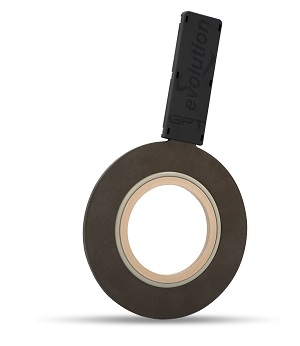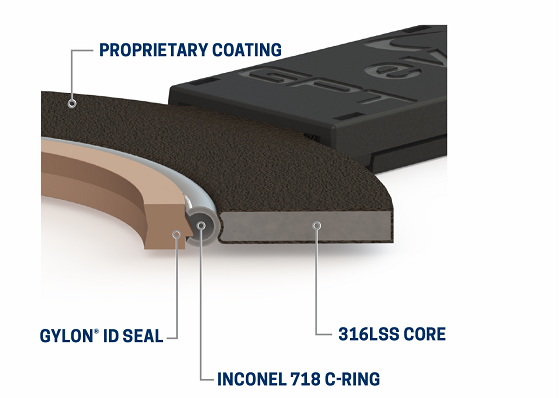America’s pipeline infrastructure is aging. According to PHMSA, there are almost 2.8 million miles of pipelines active in the United States (2017). Many older pipelines are operating beyond their “design life” but most continue to operate safely due to requirements for inspections, maintenance, and repairs. In fact, there is a high percentage of pipelines still in use today that were constructed prior to 1970 (most notably from 1950-1969), but these pipelines on the whole continue to operate safely thanks in part to the various integrity management programs implemented across the industry and advancements in pipeline components and inspection technologies.
One such product which has coped admirably during this time is the Phenolic and Glass reinforced epoxy (GRE) isolation gasket, for over 35 years GRE isolation gaskets have been used to isolate pipelines in a broad range of industries.
Glass reinforced epoxy (GRE) gaskets were a significant improvement over prior isolation technologies, such as phenolic gaskets, which were in use since the early 1900’s. GRE has now been used to isolate pipelines in a broad range of industries for close to 50 years. Advances in oil and gas extraction, changes in oil chemistry and changes in installation practices have exposed some potential weaknesses in common gaskets utilizing GRE as the primary form of isolation. The typical GRE gasket uses media permeating through the gasket to energize the seal. This “leak to seal” design is an indicator that GRE may not be the best choice as a gasketing material as media stream materials have become increasingly incompatible with the epoxy resin. Due to the continued efforts to design GRE gaskets with reduced permeation paths, it is believed that GRE’s permeability is a well known issue, but GRE has other weaknesses that open this product up to potential failure in a pipeline.
Those limitations are becoming more and more recognized as media combinations and percentages increase, as temperatures increase and as pressures increase. The fact that GRE is not inherently a fire safe material adds to the concern when reliability and safety are added to the equation, especially when these two topics continue to grow in importance in the oil and gas pipeline world.
As we drill deeper and utilize enhanced recovery methods such as thermal and CO2 injection, we are exposing the products in our pipelines to greater concentrations of harsh chemicals, higher temperatures and higher pressures. In addition, it is estimated that 40% of the world’s remaining gas reserves are sour, and CO2 and/or H2S content within these wells averages 10% or more. Maintaining pipeline integrity and keeping emissions in check has never been more important. Yet, traditional pipeline materials, including Phenolic and GRE isolation gaskets , are not always up to the challenge.
 Something needed to change.
Something needed to change.
January 2020 saw the single biggest advance in isolation gasketing technology in the last 35 years, with the introduction of the EVOLUTION® isolating gasket(kit). Evolution®, a fully-encapsulated isolation gasket that delivers the impermeable performance needed to prepare any flange for the increasing risks found in today’s oil and gas industry.
Unlike GRE gaskets, which are prone to delamination, EVOLUTION® has no laminations and as a result can better withstand high-pressure environments.
Featuring a thinner, 1/8” design, EVOLUTION minimizes the difficulties often encountered when attempting to install thicker isolating gaskets. The full-coating encapsulation allows the gasket to be hydrotested and left in the pipeline with the same isolation properties as before it was tested.
EVOLUTION's coating (a GPT proprietary material) is extremely abrasion and impact resistant while providing chemical resistance to H2S, steam, CO, CO2 and other chemicals often found in oil and gas pipelines. This fully encapsulated coating also prevents the need for expensive exotic cores, as it eliminates contact to exposed metal.
The EVOLUTION gasket features the highest tightness parameters for any product available in the market today. With demands placed on the oil and gas industry to improve leakage rates, the increased levels of tightness achieved will exceed requirements and result in greater joint integrity.
An acceleration in H2S levels as operators drill deeper and more aggressively causes traditional GRE products to become vulnerable over time. Through extensive testing EVOLUTION has demonstrated virtually no permeation or degradation, eliminating this costly problem.
EVOLUTION provides the highest pressure rating of any isolating gasket available. Unlike GRE gaskets, which are prone to delamination, EVOLUTION has no laminations and as a result can better withstand high-pressure environments.
Rated to 500°F (260°C), EVOLUTION can operate under high temperatures. Tested comprehensively for safety, the product has API 6FB, 3rd Edition Fire Test recognition.
"As its name implies, EVOLUTION is the next step in gasket technology and is poised to eliminate a number of issues that plagued gaskets in previous iterations," said Tim Hurley, GPT senior global product manager. "EVOLUTION was designed to take the best available technology for pipeline isolation and incorporate all of these benefits into one comprehensive product."
For more information on EVOLUTION® please visit; www.gptindustries.com/evolution
GPT (formerly Pikotek) will be exhibiting at CORROSION 2020 in March in Houston, Texas.
